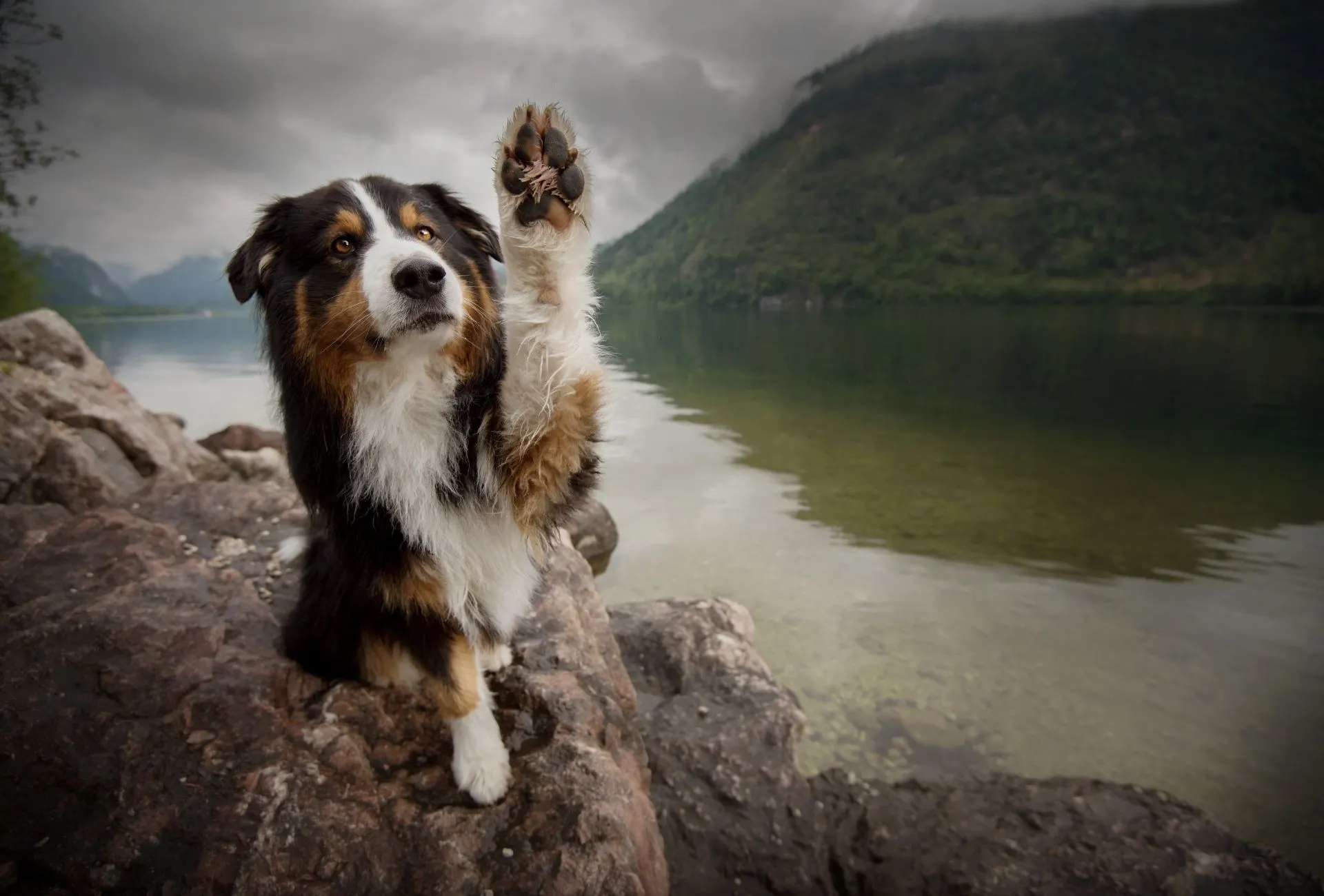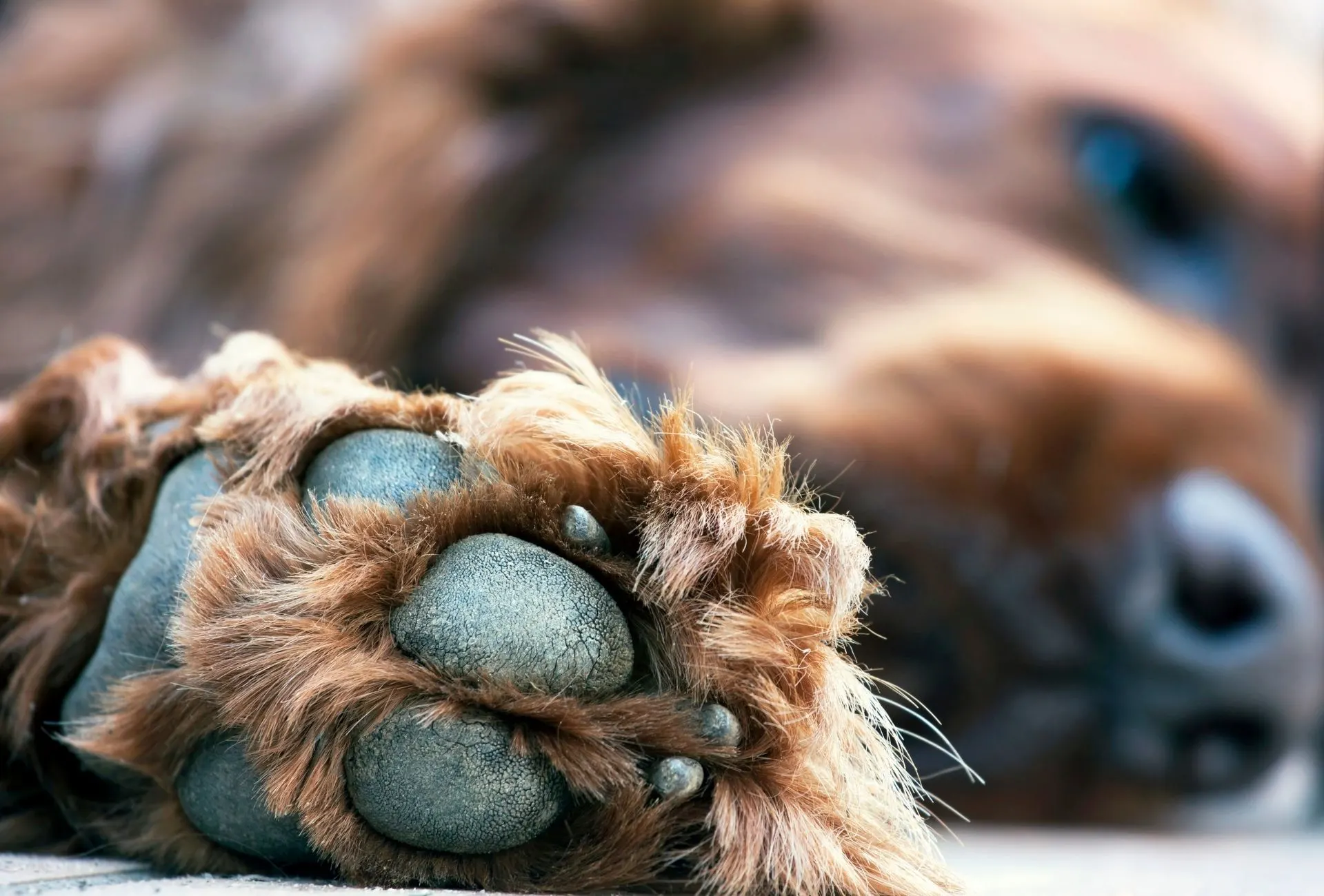Everybody who’s been around dogs has noticed this behavior – the infamous paw.
Dogs can paw at you for a variety of reasons and it’s not always what you might think at first.
Some find this behavior extremely cute and even introduce the classic “shake” or “paw” as a command.
Others don’t like muddy paws meddling in their business, especially not if it’s served with a slap in the face.
But what’s truly puzzling to some dog owners is why their dogs offer them paws without being asked to.
Truth is, your dog might just love communicating with you.
Why Do Dogs Give You Their Paw Without Asking?
Dogs often give their paw without asking because they seek attention, want to ignite a play session, show affection, or just try to apologize, all of which will be accompanied by the appropriate body language.
If your dog is giving you the paw because they seek attention, then a basic acknowledgment is what your dog might settle for.
However, with attention-seeking behavior, it doesn’t stop there. Your dog probably wants you to interact with him.
If your dog hasn’t been physically and mentally exercised that day, you might want to give in to your dog’s silent cry for entertainment.

However, if the behavior becomes a well-established pattern, you might try simply ignoring it.
The same goes for reasons such as igniting a play session if you don’t have time.
Attention seekers don’t always want to play. But they do more often than not.
My Rottweiler loves giving her paw to anybody asking her to and it’s very much a demand to play.
Since she’s super calm about it, I don’t have a problem giving in to her wish.
It’s up to you whether or not you’re fine with your dog pawing for attention.
Ever thought about the fact that a gentle paw is how your dog shows affection?
It’s true, sometimes your pup seems to have everything and still makes that intense eye contact with a gently placed paw on your knee.
This often goes hand in hand with attention-seeking.
My Rottie does it all the time when she places a paw and upon first acknowledgment, she’ll scoot right next to me or on my lap.

In case you’ve just scolded your dog or are somehow cross with him, you might see an apologetic paw.
While the other paws are accompanied by a relaxed or even tense ready-to-play posture, this one is definitely not.
The apologetic paw comes in a package with flat ears, a low-wagging tail, and perhaps even licking or avoidance of eye contact.
If it becomes excessive you can ignore that behavior too but don’t punish your dog for something that’s over now.
Dogs who have arrived at that point are just making a peace offer and usually, that’ll settle the matter.
Why Does My Dog Want Me To Hold His Paw?
Dogs might want you to hold their paw to seek comfort, show affection, or apologize. In other instances, holding your dog’s paw can be a learned behavior pattern.
As mentioned before, holding your dog’s paw can be attention-seeking behavior and since the attention can be positively reinforcing, dogs might love the fact that we’re holding their paw just for comfort.
This can happen in situations where your dog truly feels uncomfortable, runs back to you, and stretches out his paw for you to hold it.
Pawing can also be done quickly if your dog is trying to signal that the situation might be a bit overwhelming for your dog.
Amalia will often slap her bear paw on me and then do nothing but stare at me.
While I’m sure it’s partly basic comfort (even for her as an overly confident girl), there’s another component.
It’s almost as if my dog is trying to comfort me (i.e. showing affection). What can I say, it does work pretty often.
Dogs can also want you to gently hold their paw in an effort to make something up as direct contact might confirm that the bond is still intact.
The last reason your dog wants you to hold his paw can have to do with learned behavior.
If you have a command like “shake”, “(give) paw”, or even “sit pretty” where your dog will reach out with both paws, you might get this behavior even if you didn’t ask them to.
I’m sure that’s the psychological motivation behind my dog’s paws sometimes.
Before allowing her to run off-leash or devour her meal, I’ll often do a couple of commands and “paw” is one of them.
Simply stated, your dog can assume that behaviors that were positively rewarded in the past, will be rewarded again.
If you do reward that behavior (through food, pets, or even just attention), it just confirms that their impulse was right.
Why Do Dogs Raise Their Paw When Being Petted?
Dogs might raise their paw when being petted to reciprocate your affection and the physical contact indicates that your dog enjoys the pet.
However, a more aggressive pawing might also signal that the dog wants you to stop, kind of like pushing a hand away.
If you think about it, dogs have come an incredibly long way in reading our body language and some might’ve figured out that this is a way to tell people to stop petting them if it helped in the past.
Why Does My Dog Wrap His Paws Around My Arm
This one is pretty funny as my dog is displaying this behavior too.
Just move your hand in a certain way directly in front of my dog and she’ll jump up and wrap both paws around your arm.
Why is she doing that?
I can only assume that it’s a learned behavior because we do have a “sit pretty” command and the reactions she gets when she looks like an adorable 100-pound bear cub might be what she’s looking for.
Sometimes, dogs wrap both paws around your arm in a way of “locking” you in place so they can start grooming.
As long as your dog wraps their paws around your arm, you should be fine. Once they grab your arm with their mouth, that’s when you know something might’ve gone wrong.
Disclaimer: This blog post does not substitute veterinary attention and does not intend to do so. I am not a veterinarian or pet nutritionist. If your dog shows any sign of illness, call your vet.